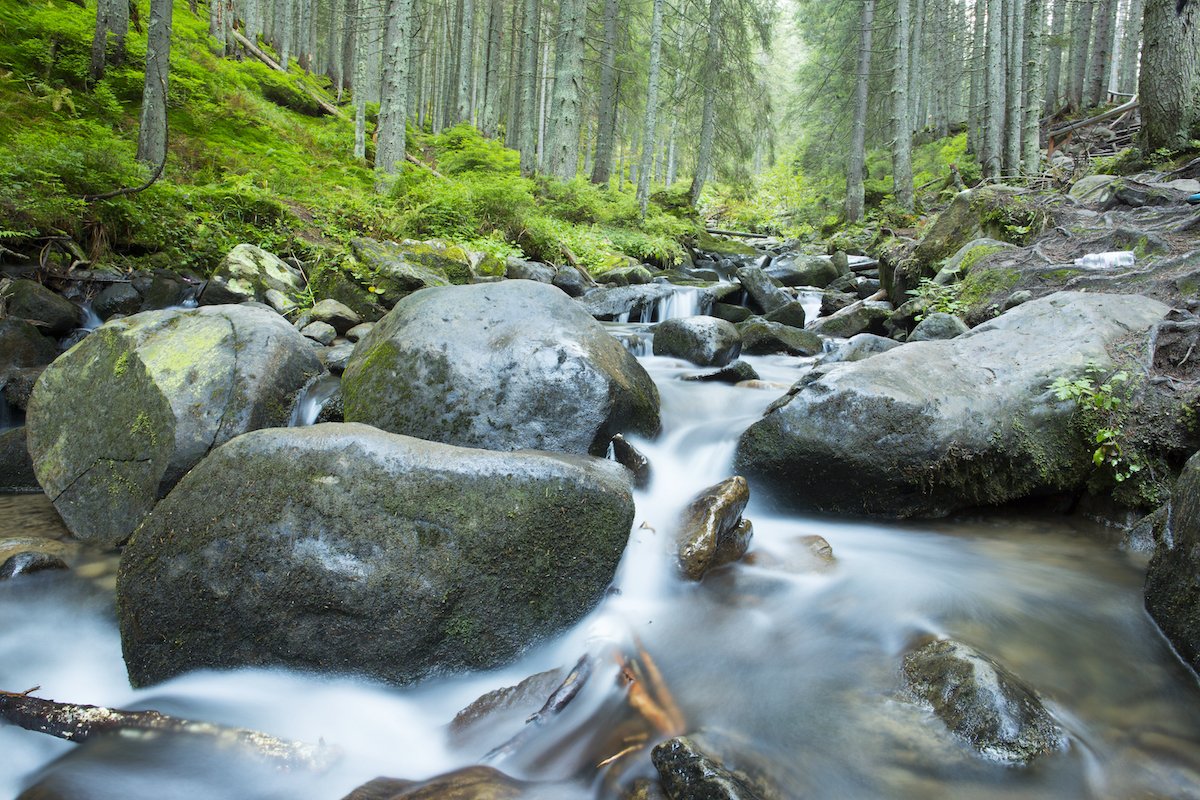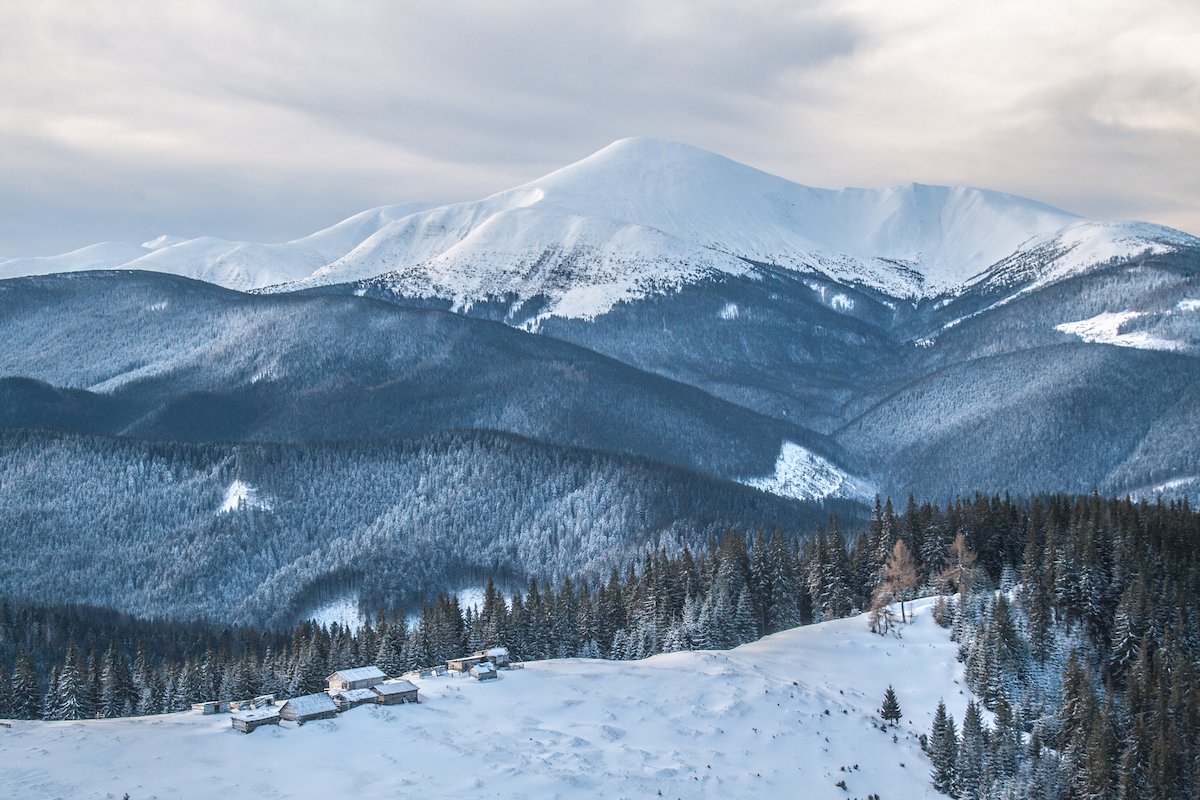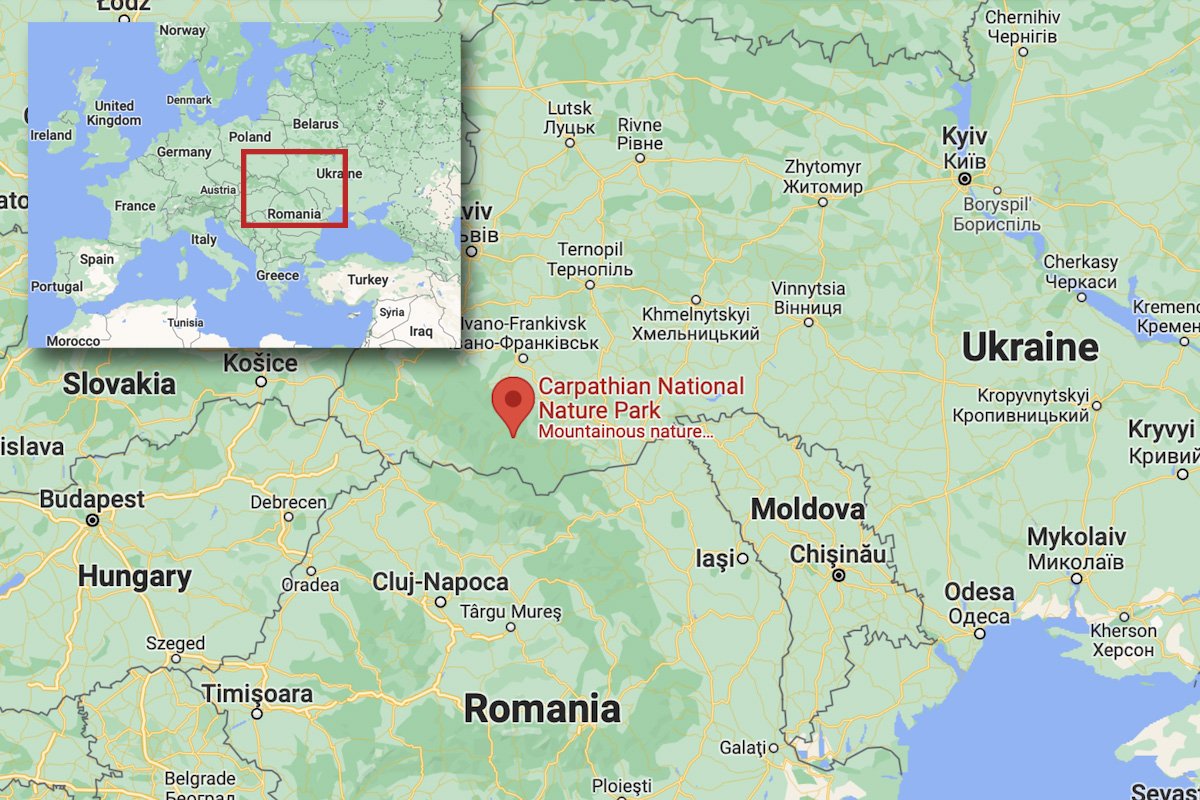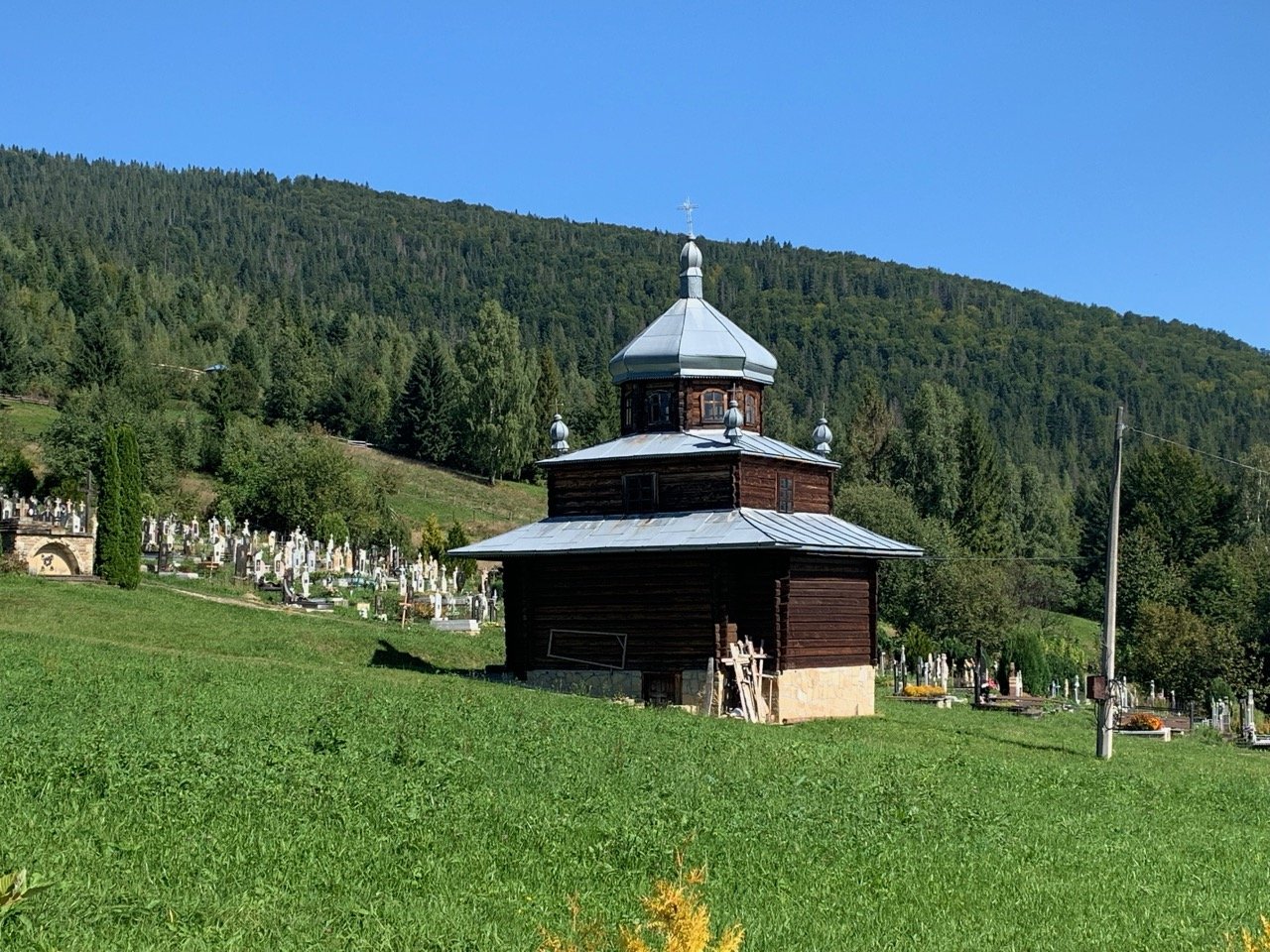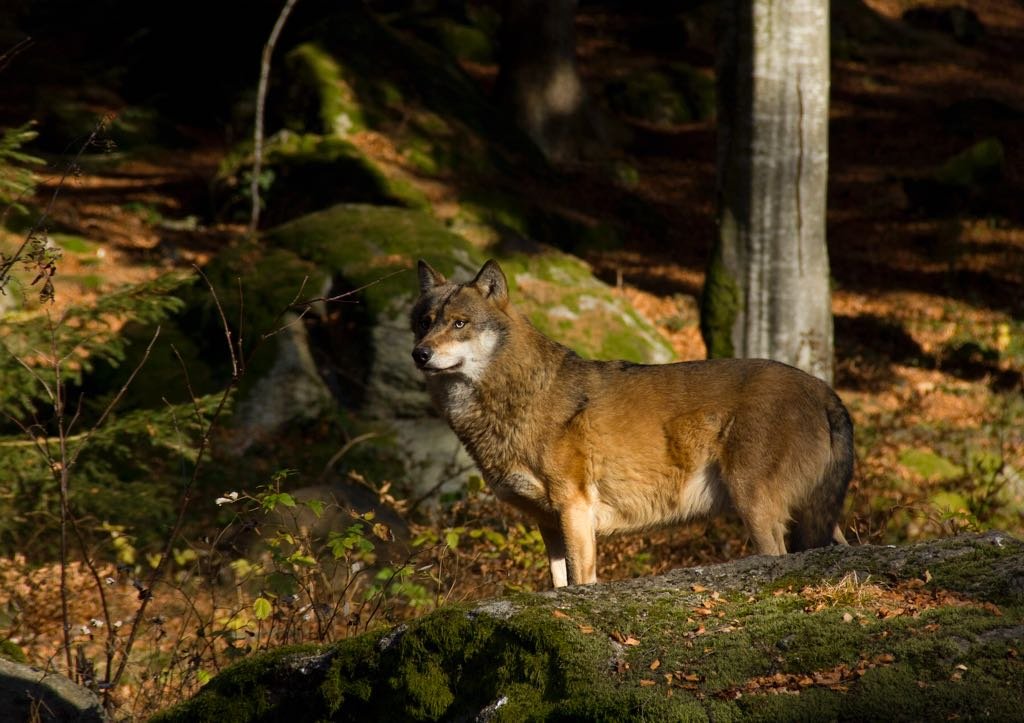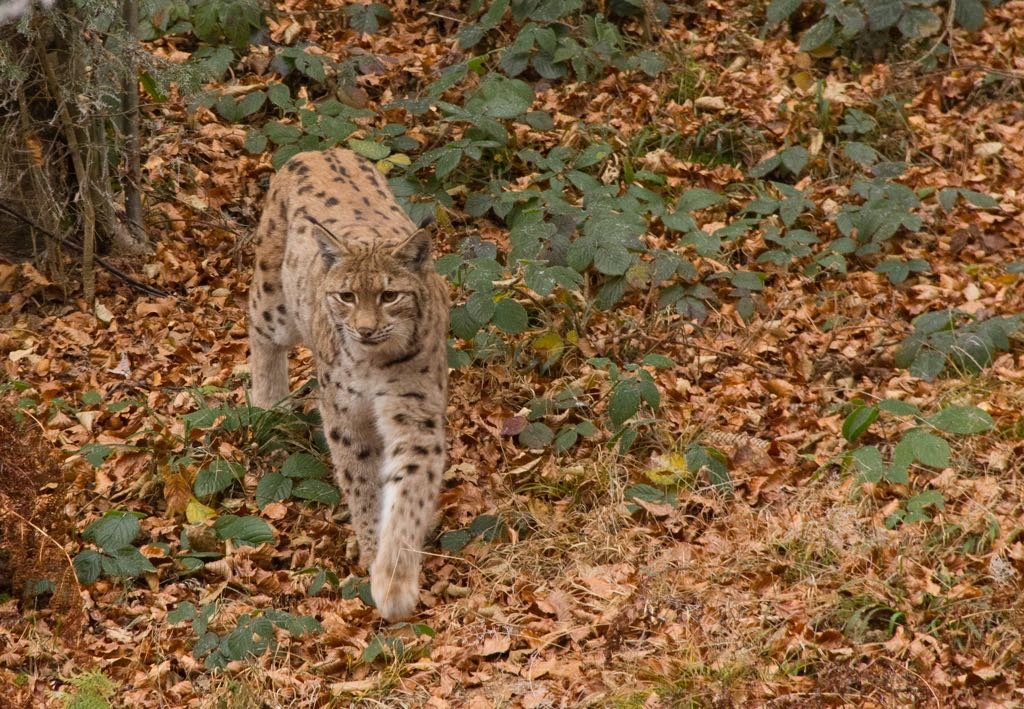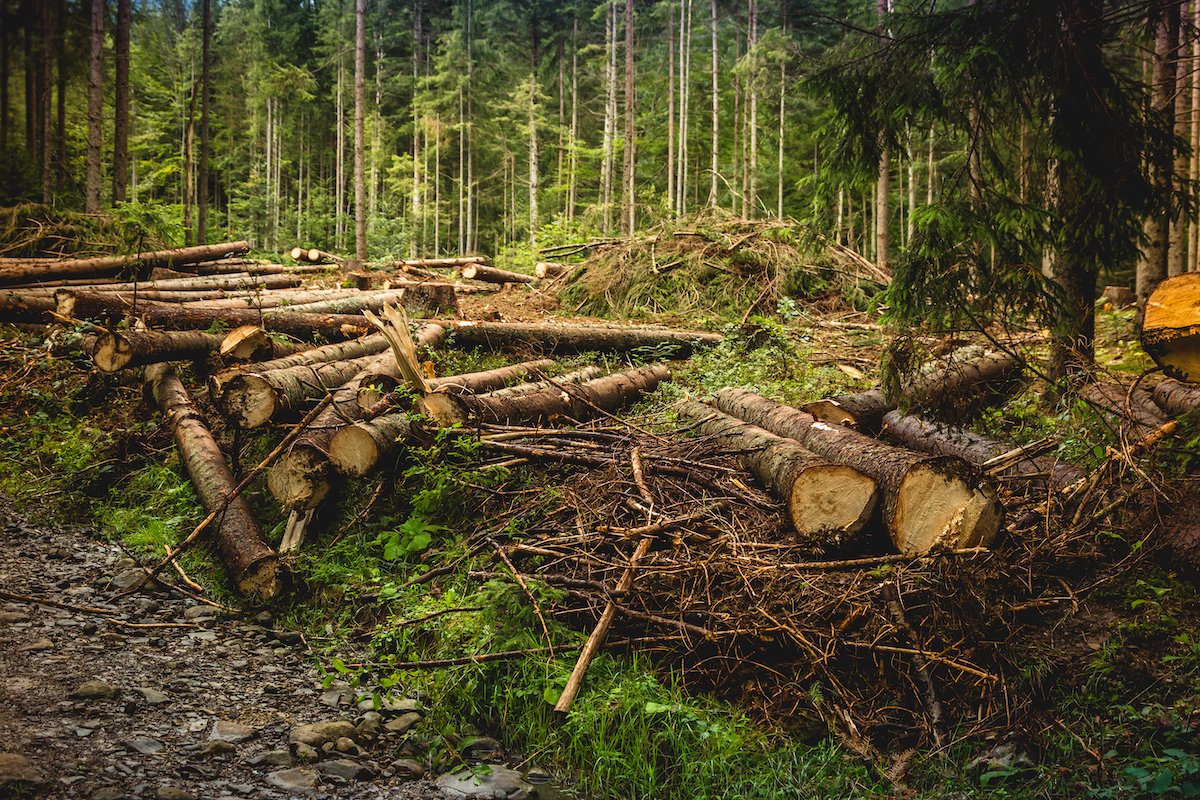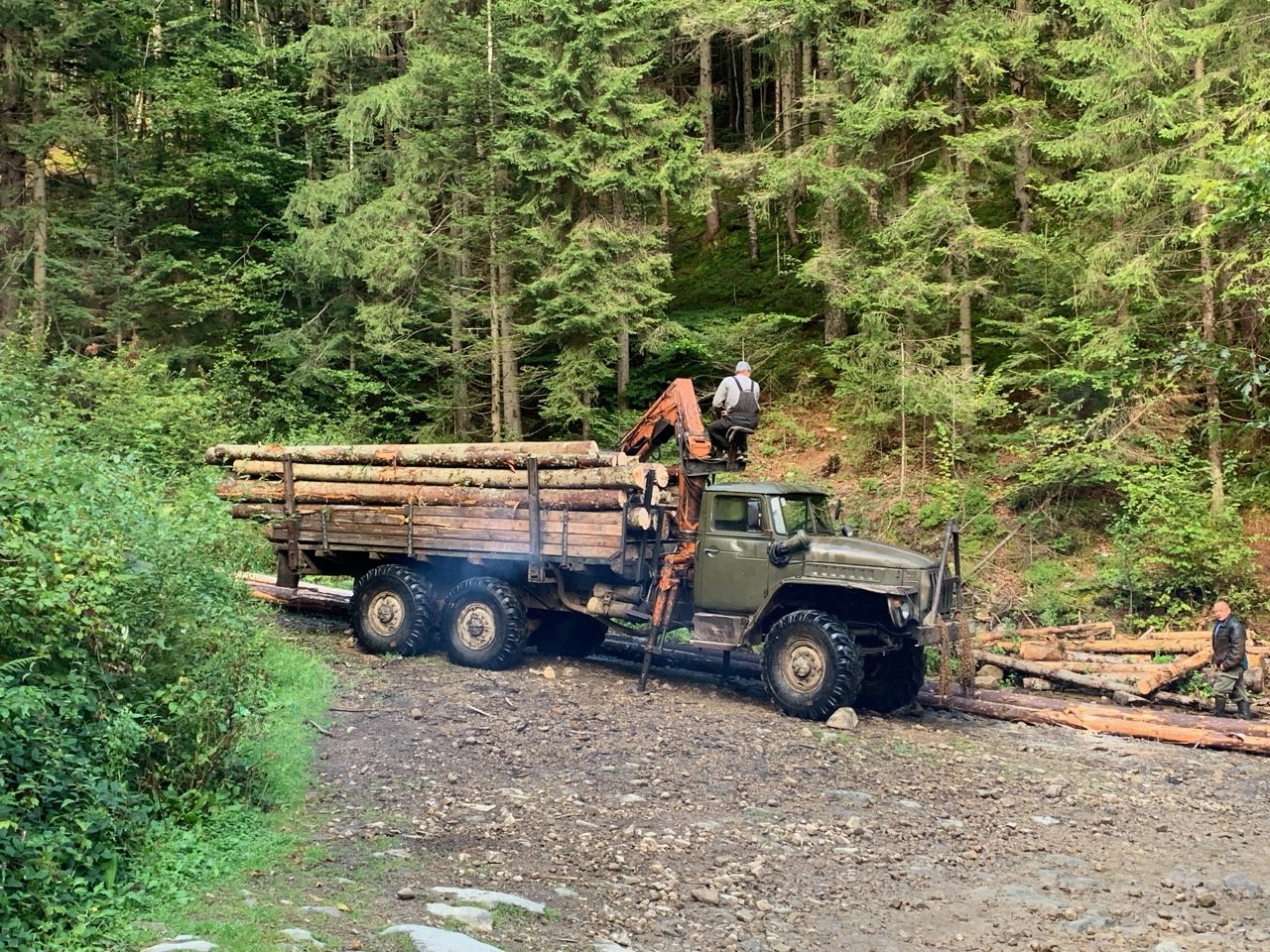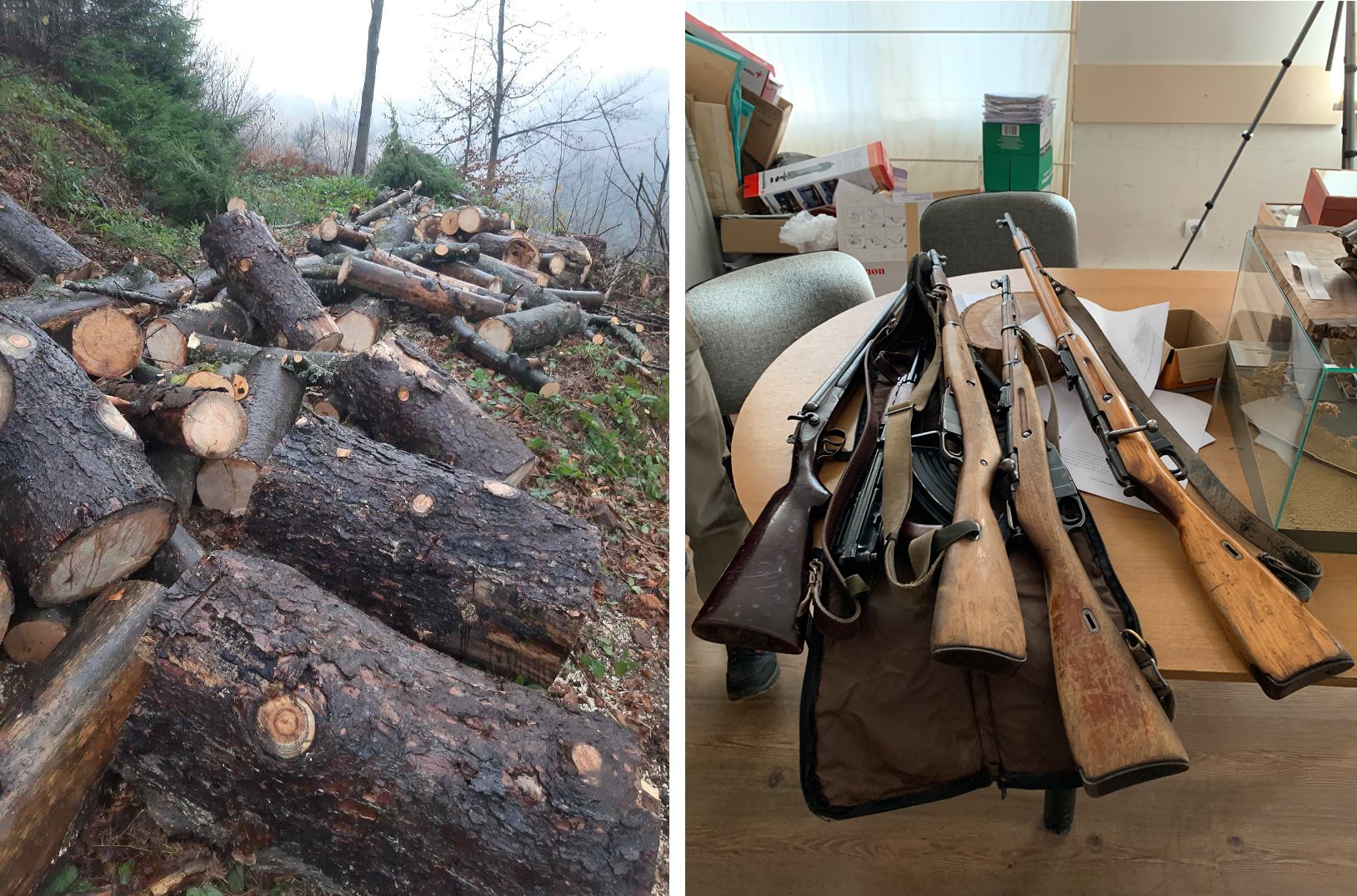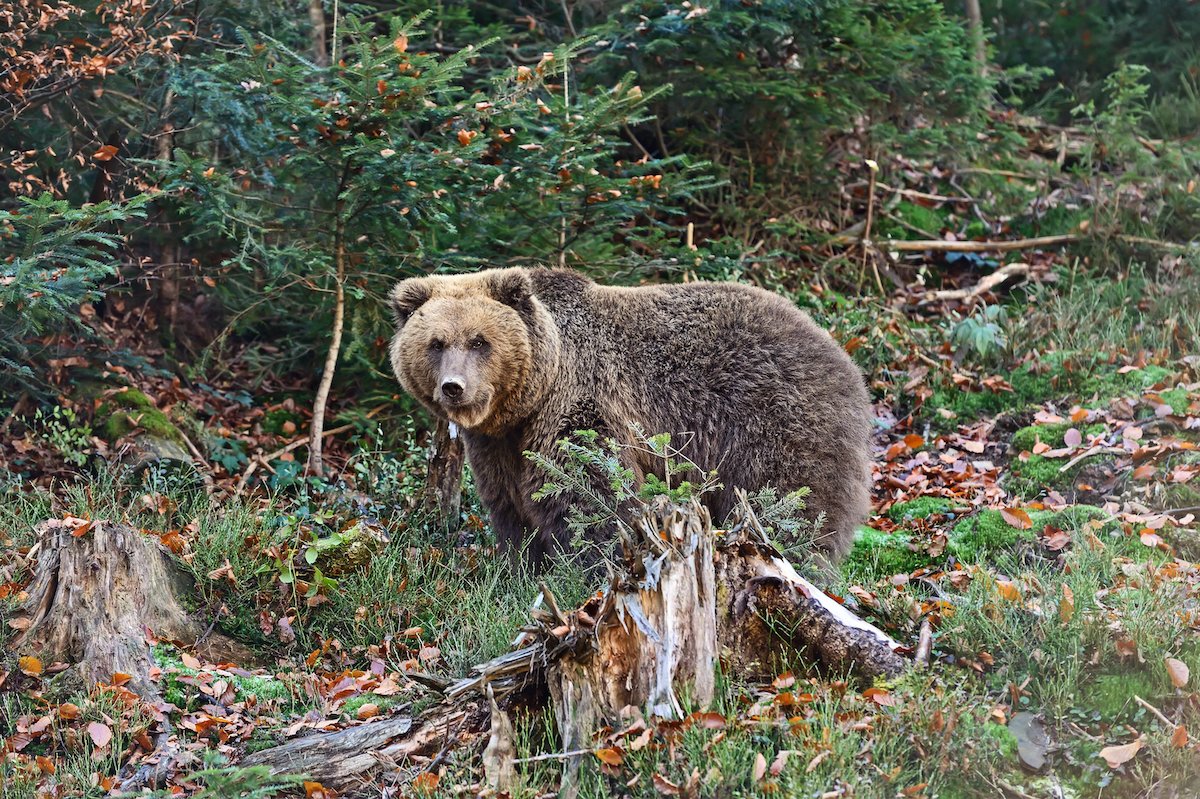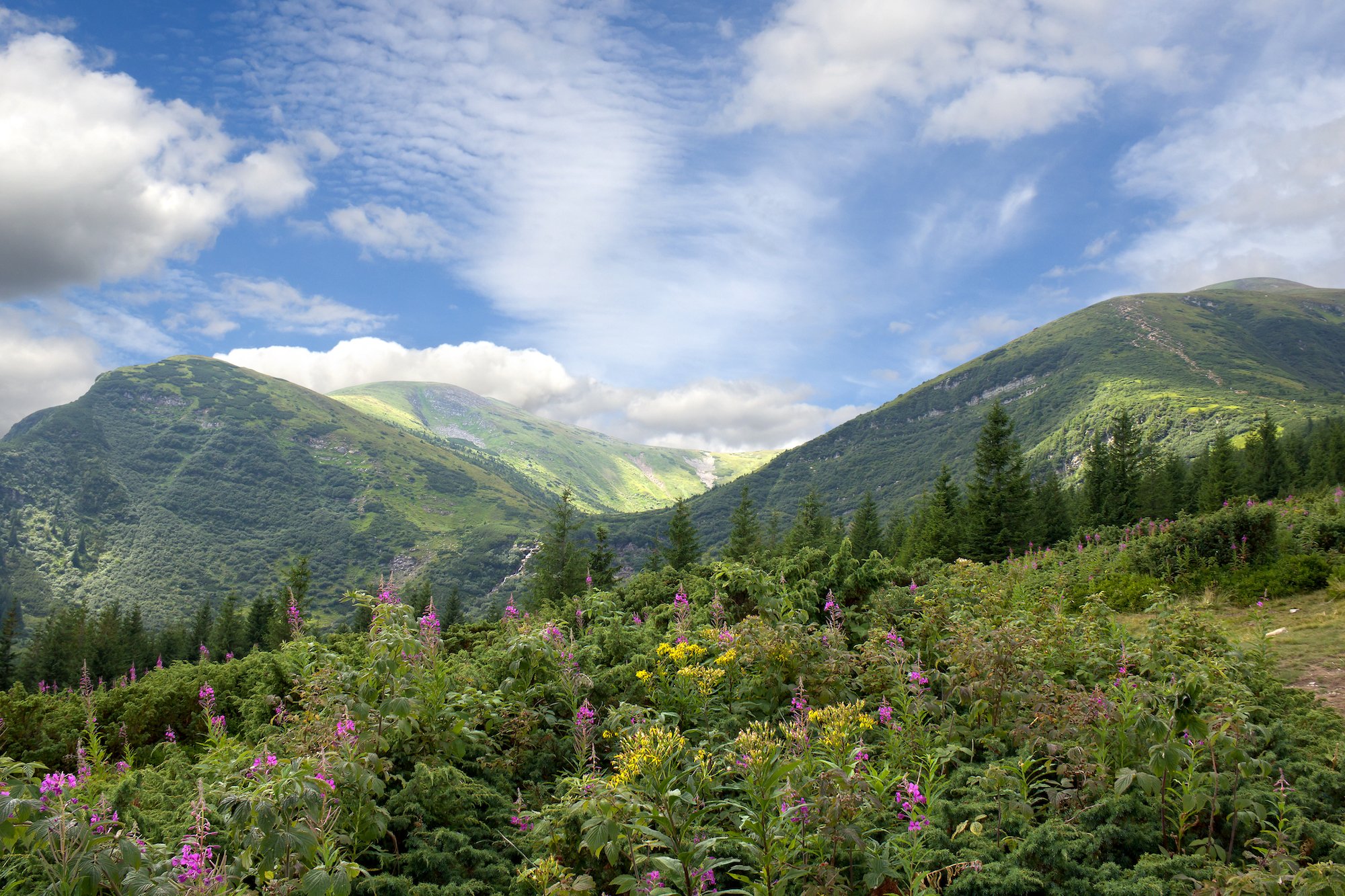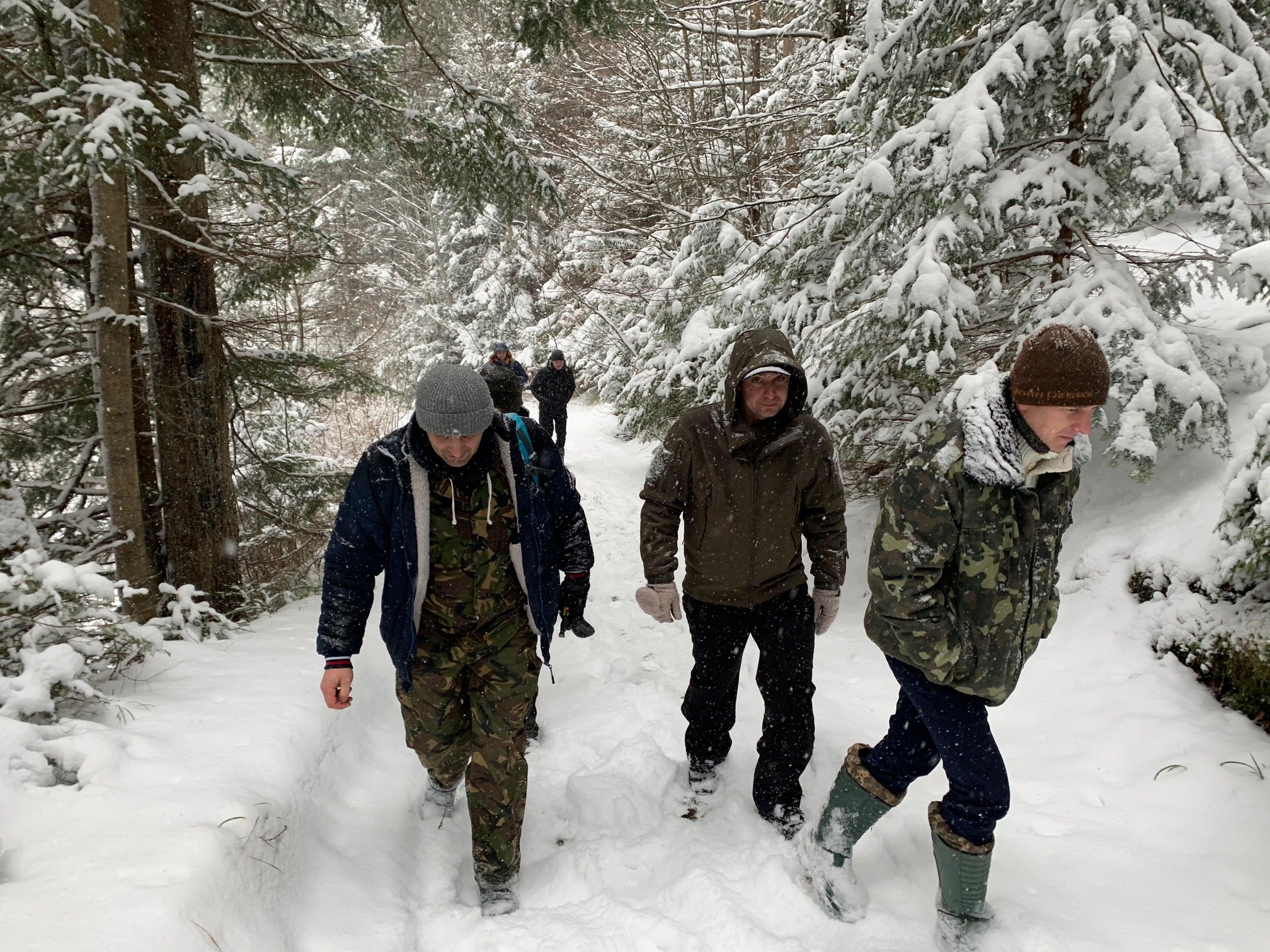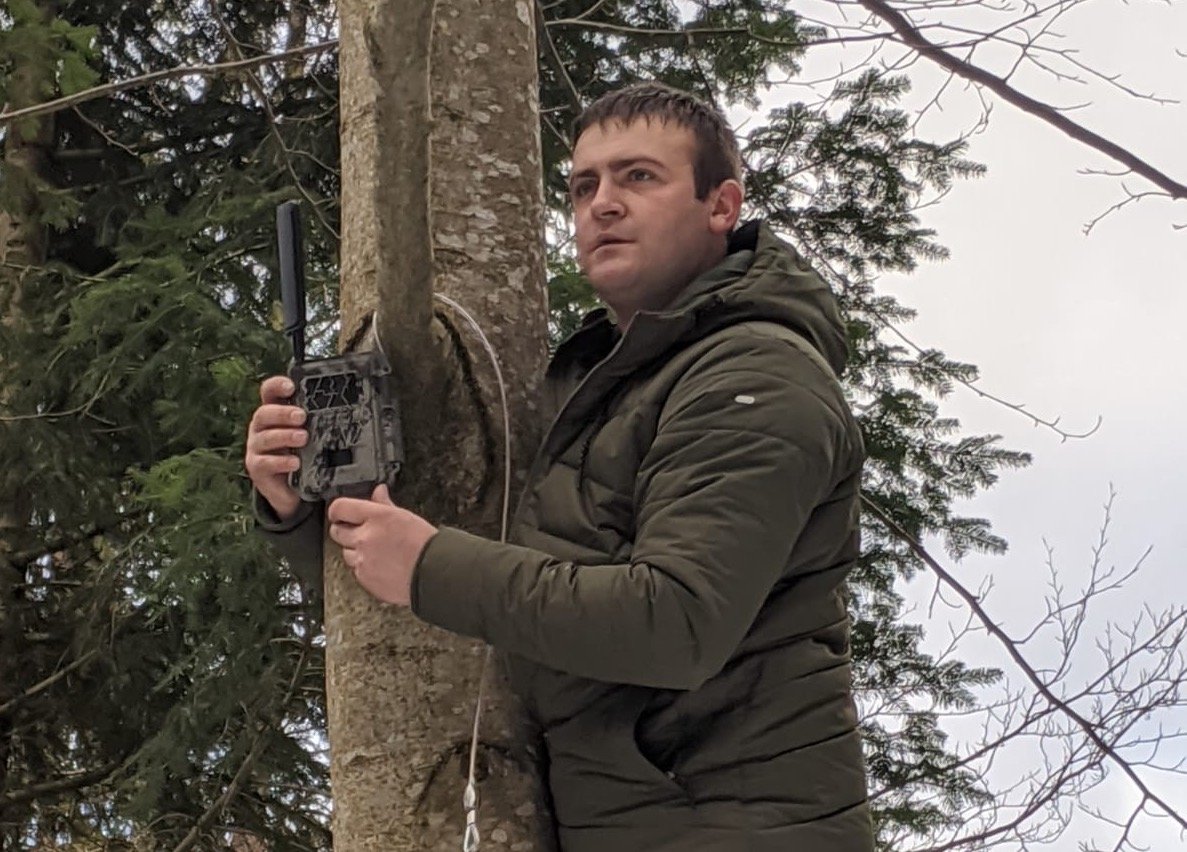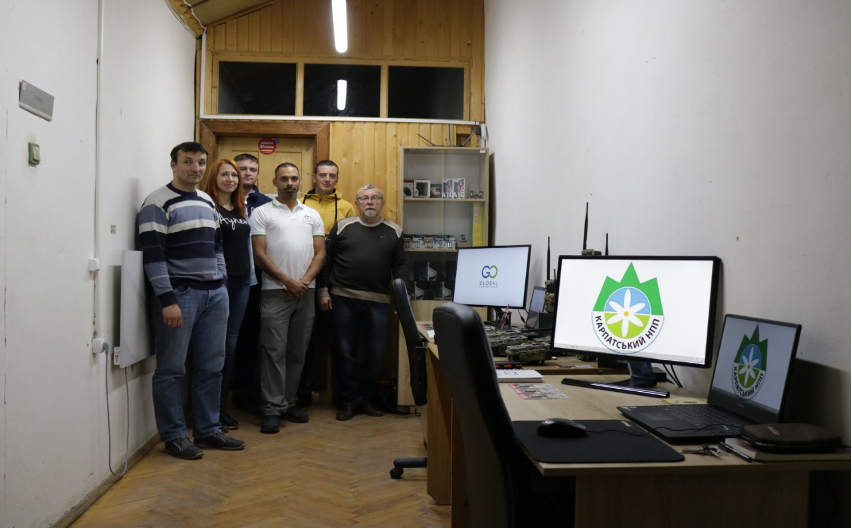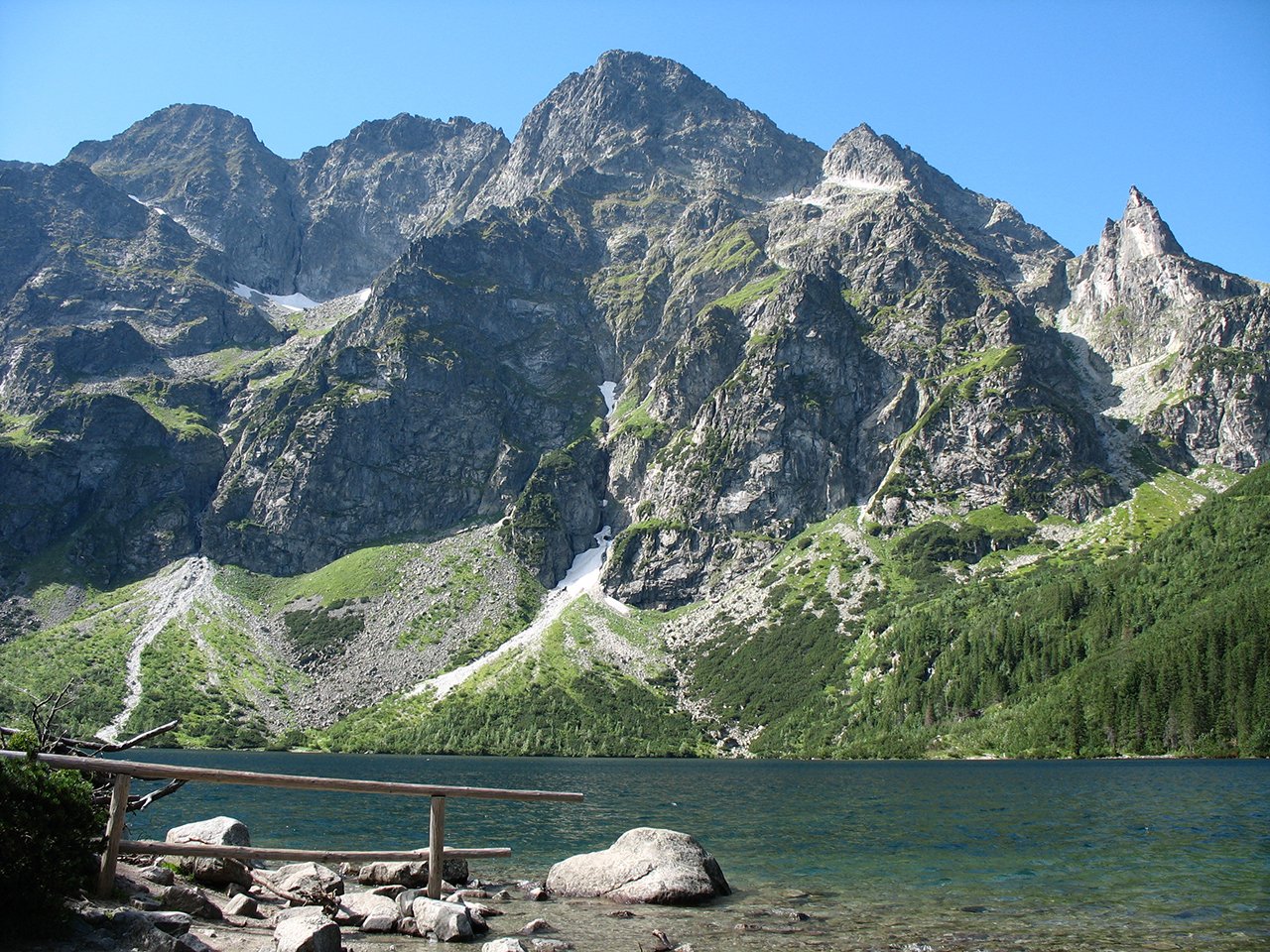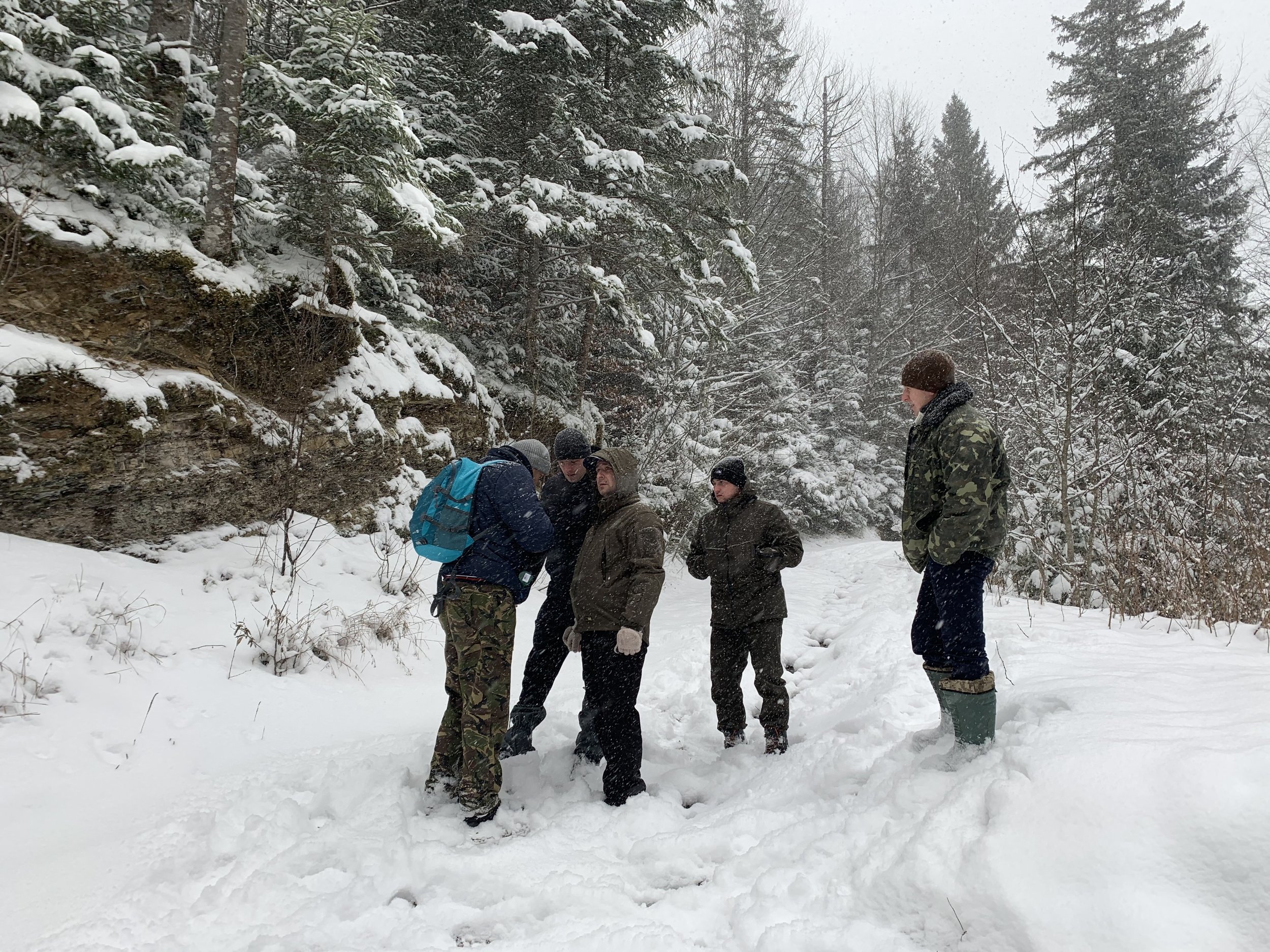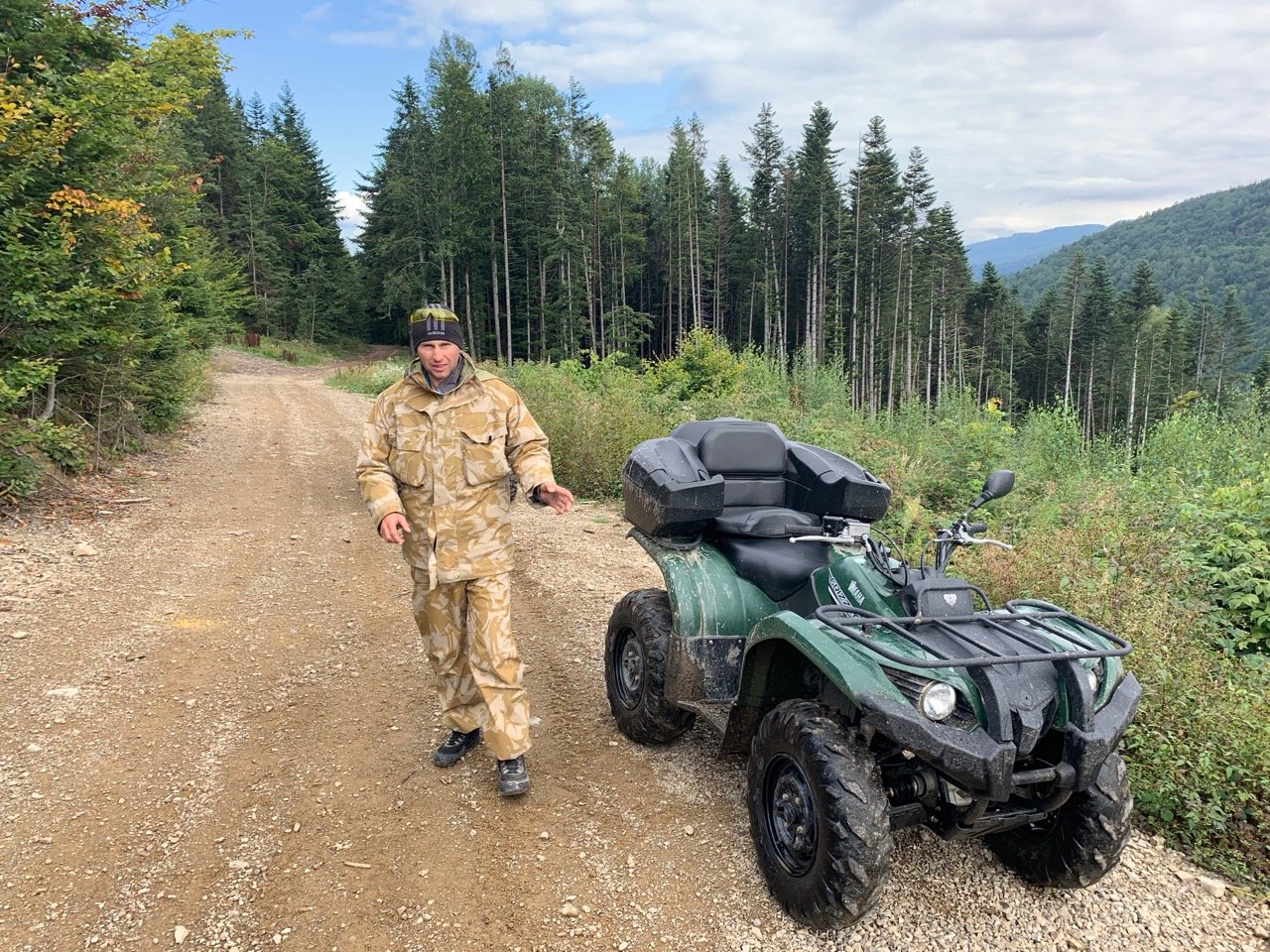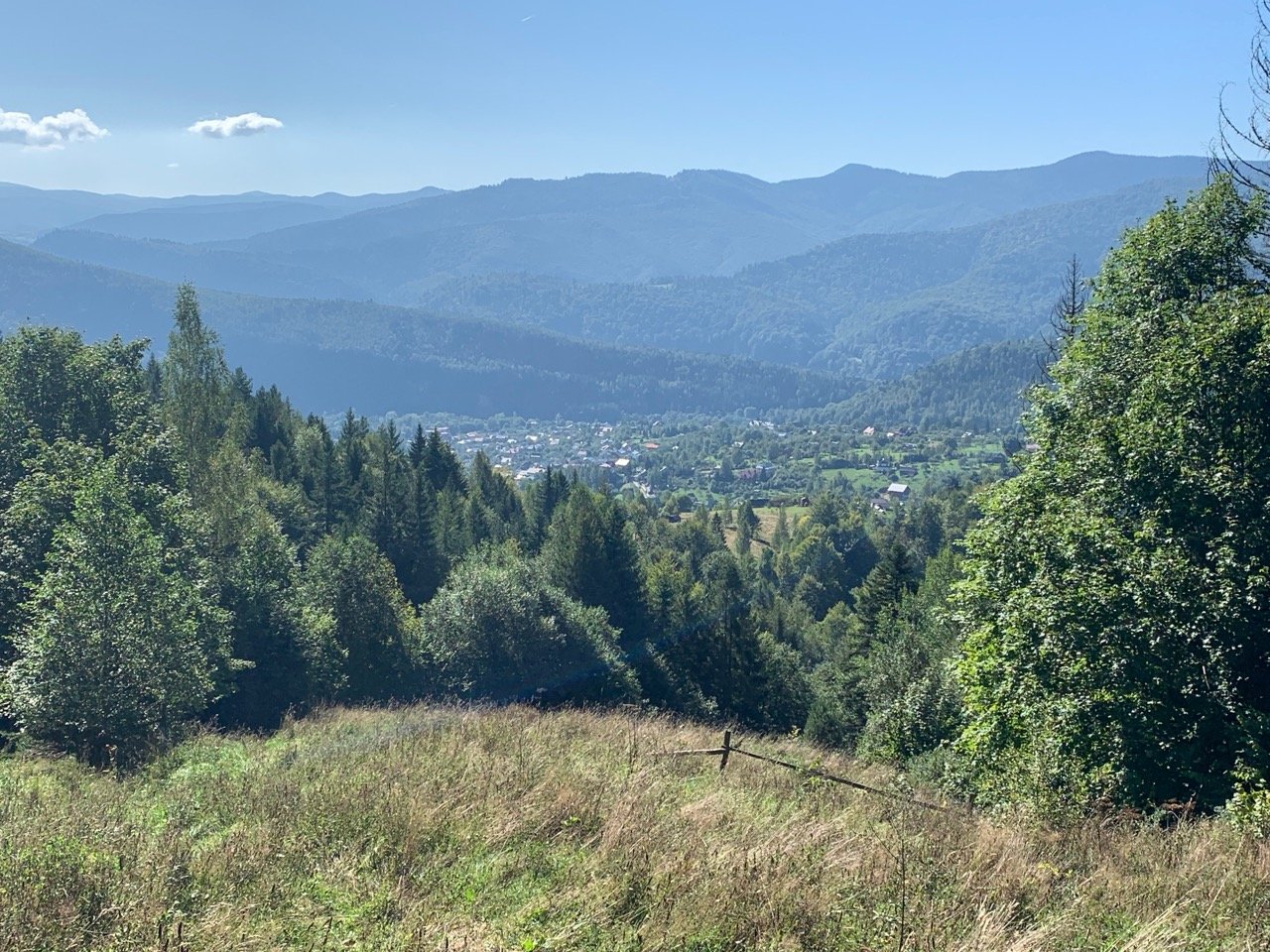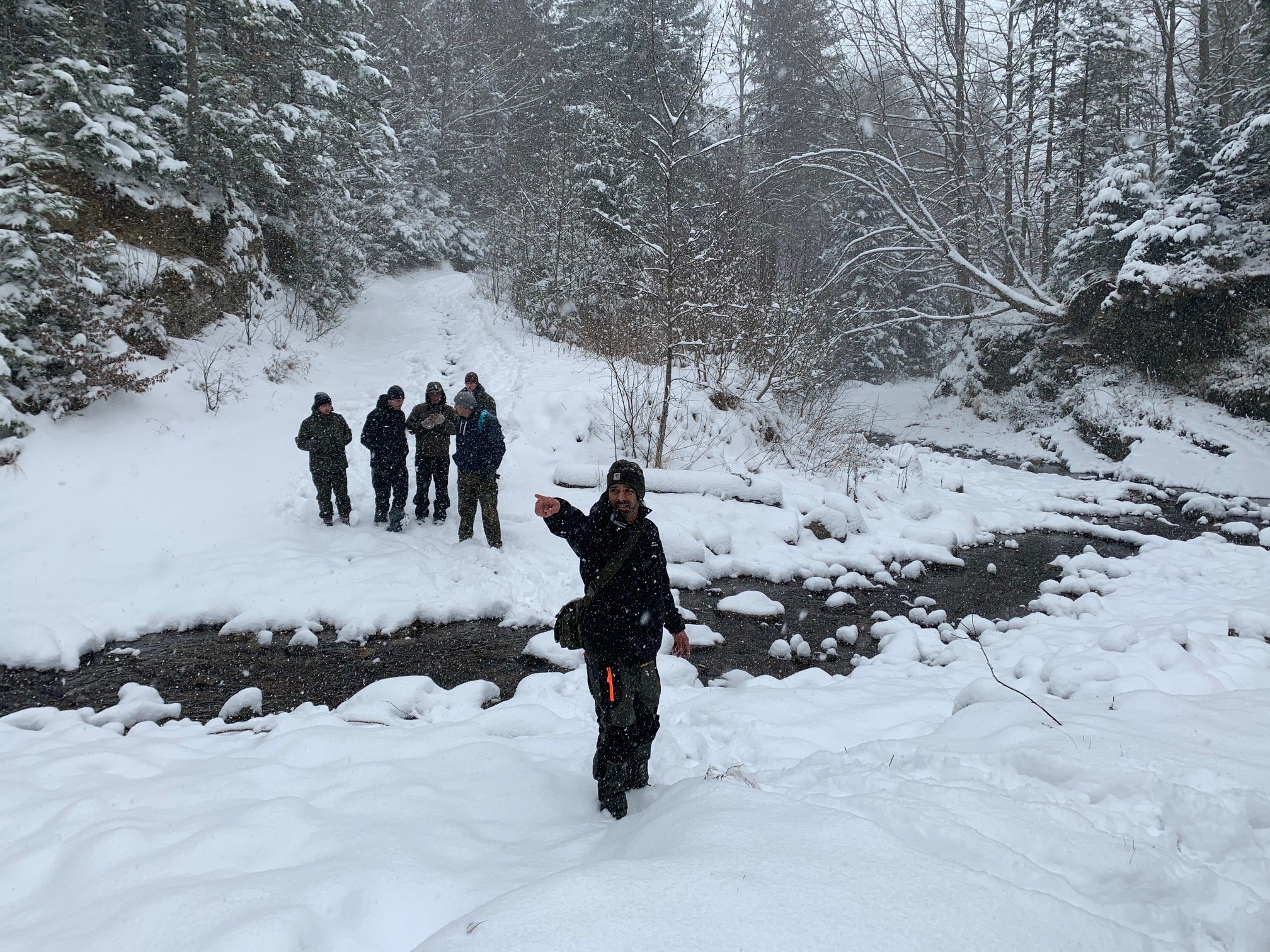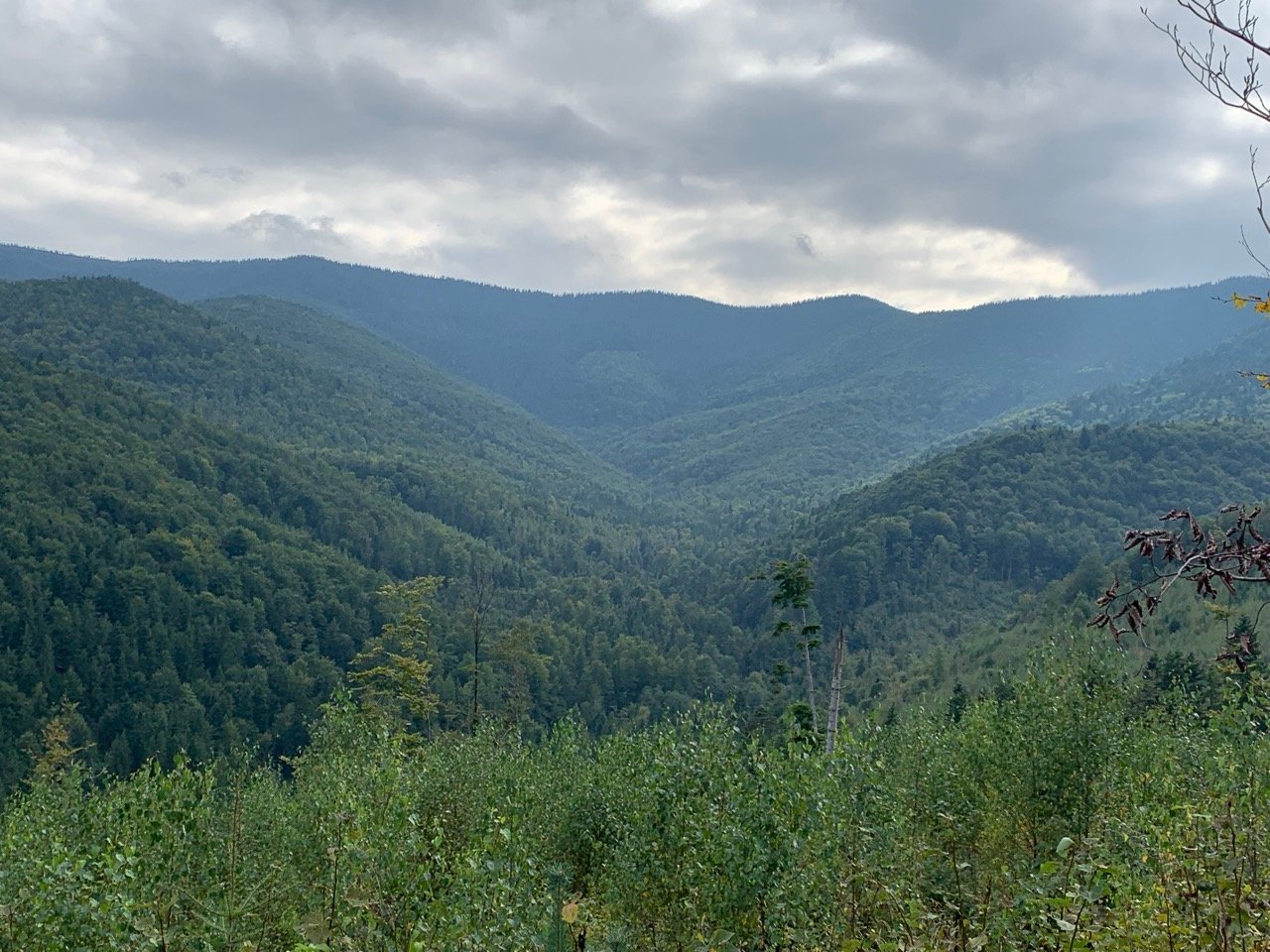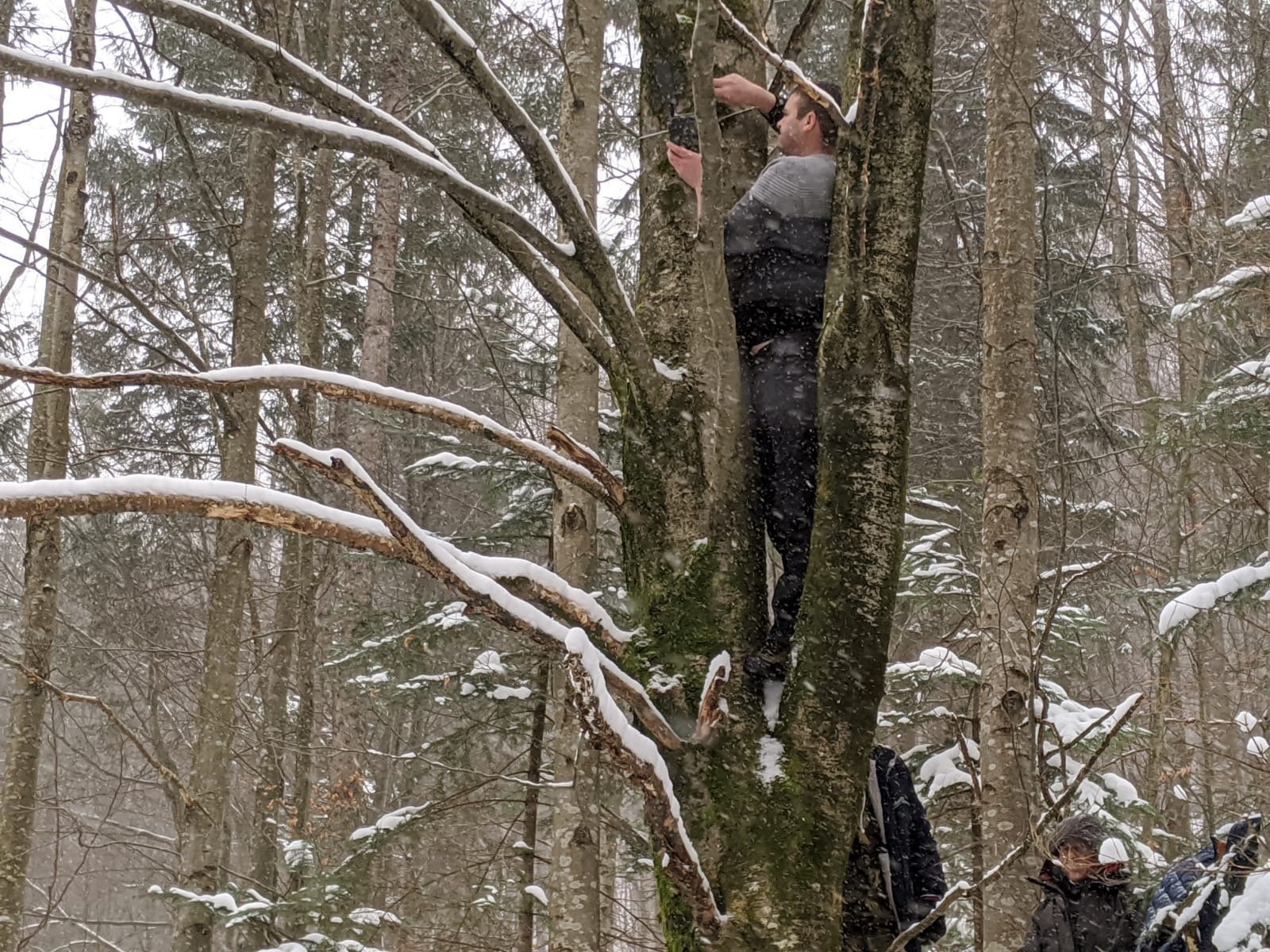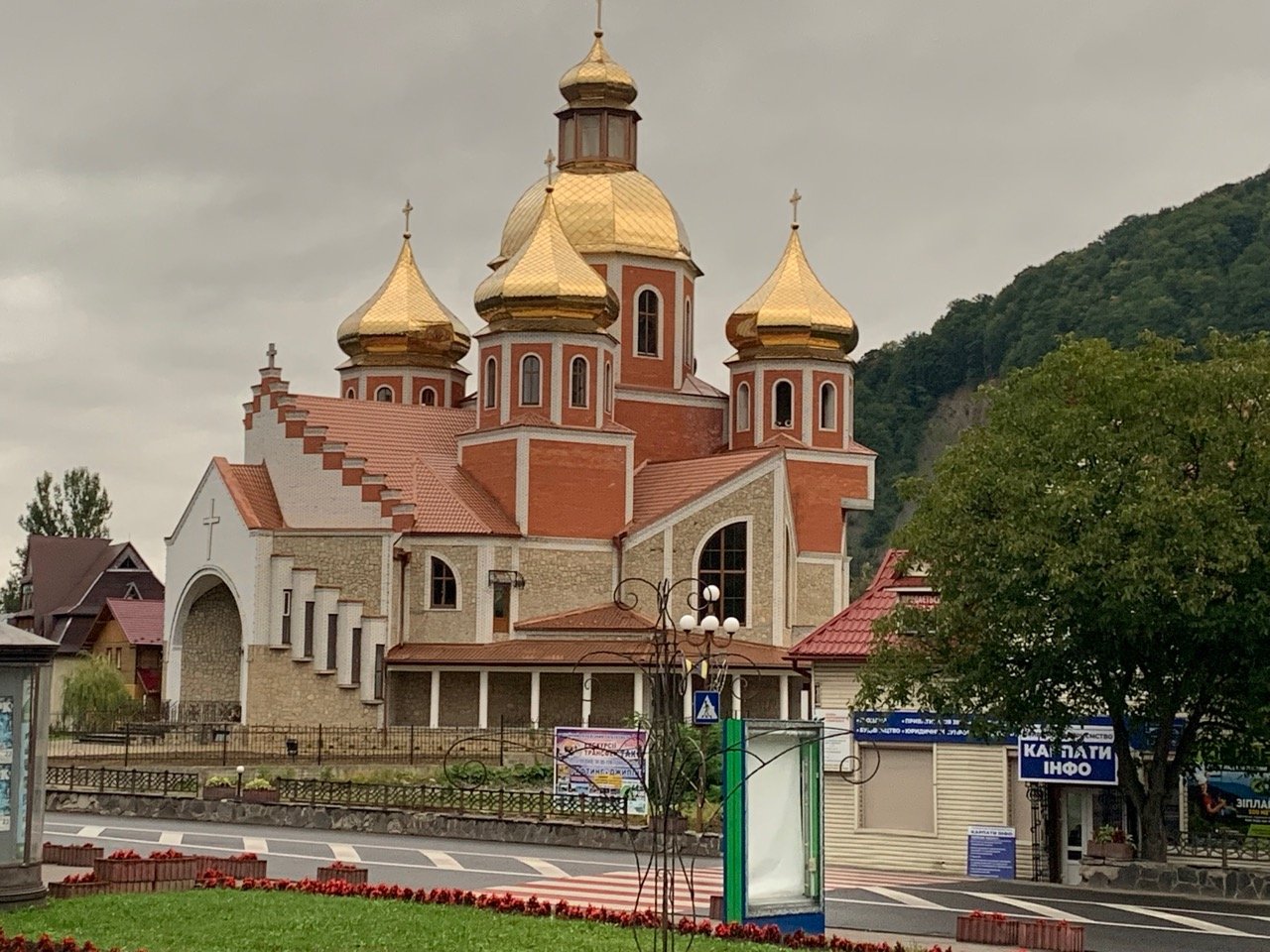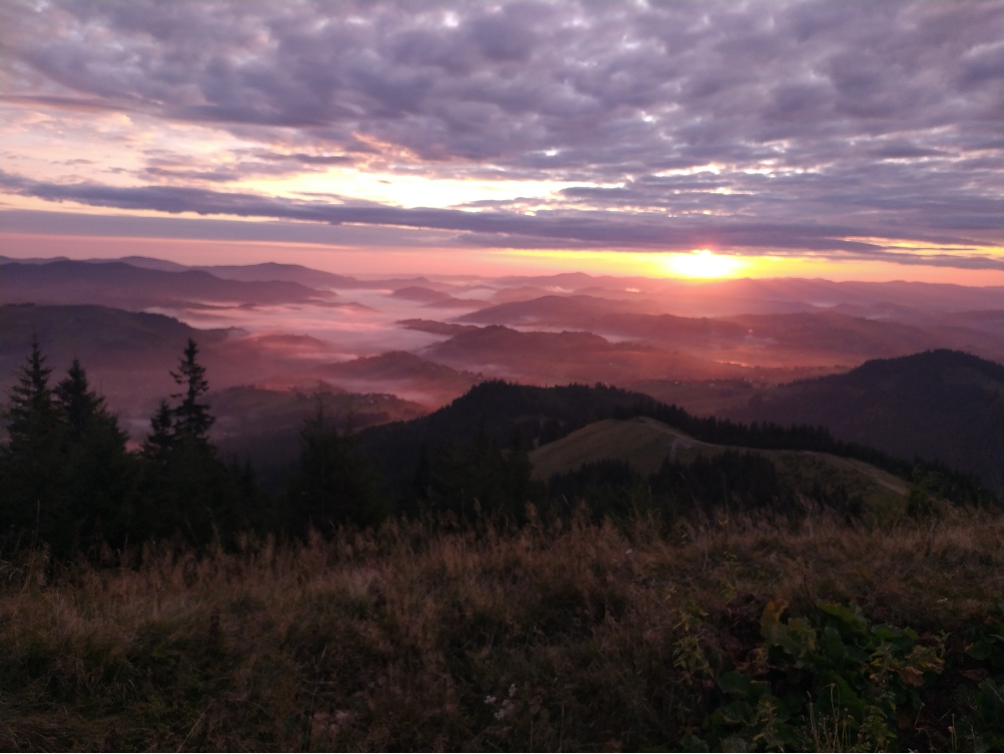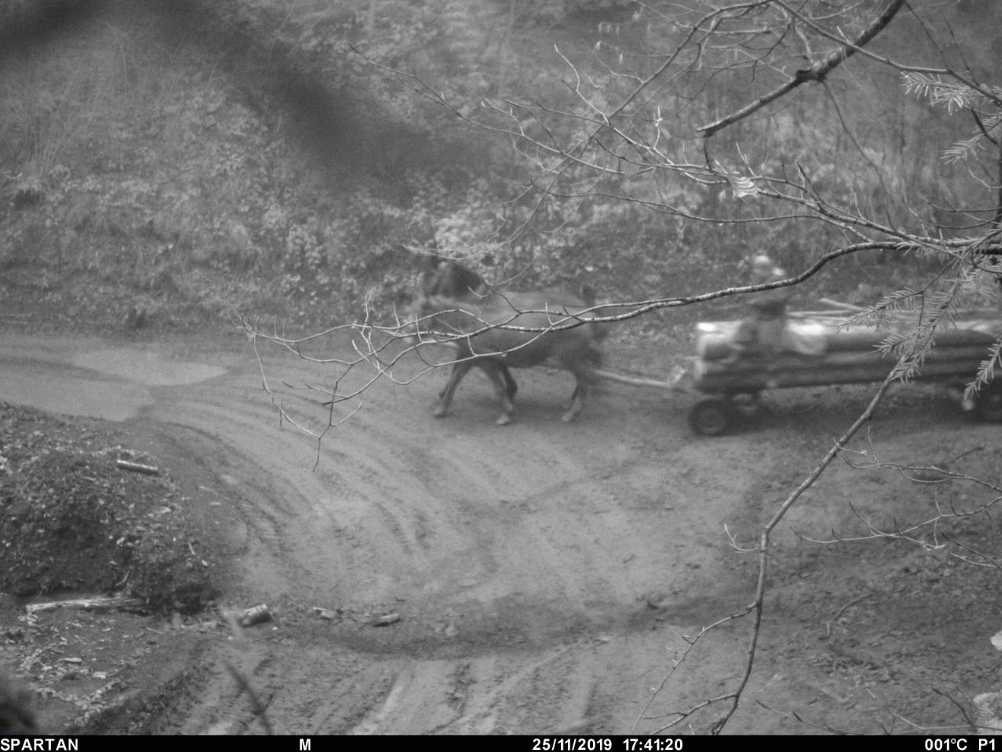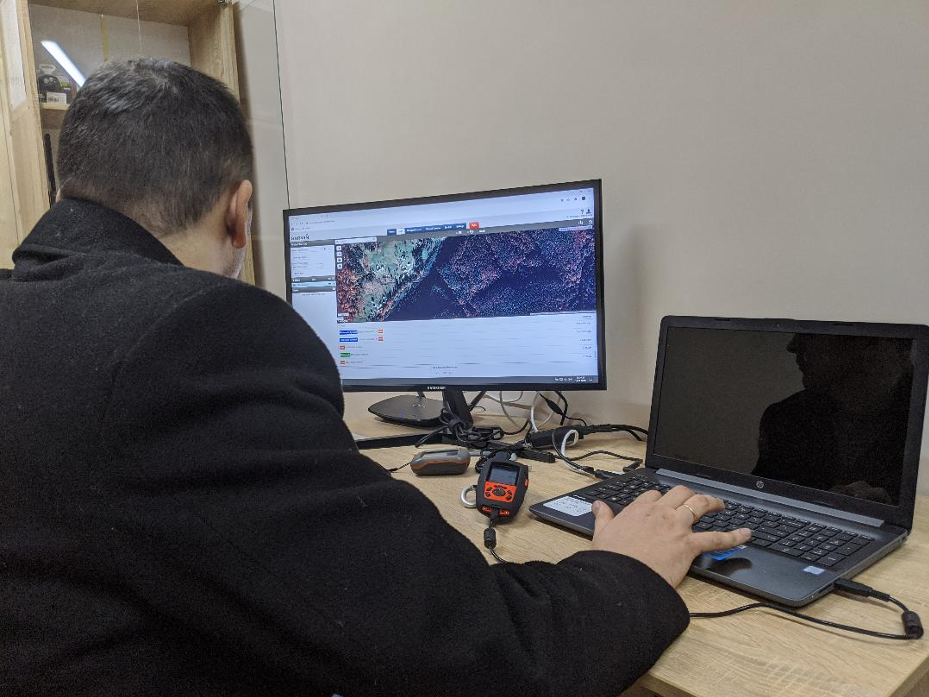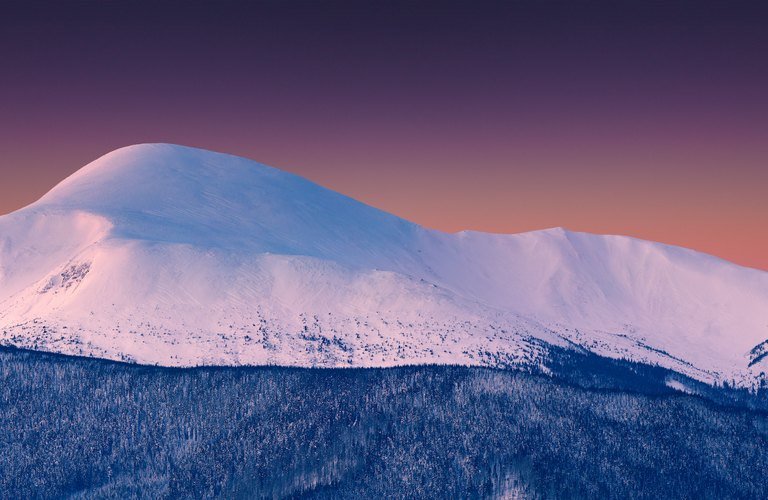Carpathian National Nature Park, Ukraine
OVERVIEW
Carpathian National Nature Park is Ukraine’s first and largest national park, and the largest protected area in the Carpathian region. The Carpathian Mountains harbor Europe's largest remaining tracts of primeval forest, and support the continent's largest montane populations of wolves, lynxes, and brown bears.
SIZE
51,571 Hectares
GOAL
$520,000
VISITORS BY 2030
2,500,000
Introduction
In Ukraine there’s a legend: long ago, there lived a beautiful young girl named Hoverla, the daughter of a Mountain King. Nearby lived a young shepherd named Prut, who fell in love with Hoverla. Disapproving of their relationship, the Mountain King turned his daughter into a mountain. A local wizard told Prut that to transform her back, he only needed to get to the peak of the mountain before sunrise. Prut climbed as quickly as he could, wishing to see his love again, but the mountain was too high. He reached the peak too late, and began to cry inconsolably. Soon, he turned into a river. Now, Prut and Hoverla are inseparable.
Mount Hoverla (2,061m), the tallest mountain in Ukraine, lies within the Carpathian National Nature Park and the neighboring Carpathian Biosphere Reserve. At the foot of the mountain, the river Prut comes alive, a lifeline for this ecosystem.
The Prut river winds through dense evergreen forest, where the howl of wolves echoes through the trees and bears roam, searching for berries and tubers beside glacial lakes and peat bogs. Along the way, the river merges with streams that trickle down the mountainsides: the Zhenets, the Zhonka, the Kamyanka.
High above the Prut lie steep crags capped by alpine meadows, where wild narcissus, Carpathian crocus and wolf’s bane flush burst into white, yellow, and purple-blue blooms in the spring. In the winter, tall pines rest beneath a thick cloak of snow and ice that glitters across the landscape all season. The mountains’ towering waterfalls freeze in time and space, becoming towers of white-blue ice.
These Carpathian Mountains extend over 206,000 square kilometers in a 1,500km-long chain across Poland, Romania, Slovakia and Ukraine, forming one of Europe’s largest mountain ranges. Formed at the same time as the Alps, they swing in a wide arc from the Danube Gap, near Bratislava, Slovakia, to the Iron Gate in the Danube River Valley, near Orşova, Romania.
The mountains connect the forests of northern, southern, eastern and western Europe like a green backbone, supporting the continent's largest remaining tracts of primeval forest.
Natural History of the Carpathians
The vast forest that blankets this crescent-shaped mountain range is almost the size of Great Britain, constituting the largest tract of unfragmented forest in Europe. It contains over one-third of all European plant species, 39 of which are critically endangered and 135 of which are endangered. The forests are dominated by silver fir, spruce, and European beech, and ten patches of primeval beech forest in the Carpathians were designated a UNESCO World Heritage Site in 2007.
The Carpathian Mountains' vast watersheds produce an estimated $2.2 billion a year in clean water.
This is possibly the last place in Europe where all European big game species can be found. The largest European montane populations of wolves and lynxes, as well as the world’s largest population of brown bears, roam through these dense forests. Carpathian chamois, a species of goat-antelope that is adapted to steep and rocky terrain, leaps along precarious rocky ridges. The Tatra chamois, a critically endangered and endemic subspecies, lives high in the Slovakian and Polish Carpathians.
Because of its incredible richness and global importance, WWF has named the Carpathian Mountains one of its Global 200 ecoregions, which represent the world’s most outstanding areas requiring targeted conservation efforts.
Carpathian National Nature Park, Ukraine
Established in 1980 and spanning 515.7 km2 (51,570 ha), Carpathian National Nature Park (CNNP) is Ukraine’s first and largest national park, and the largest protected area in the Carpathian region.
The park conserves at least 48 mammal species, 110 birds, 11 fish, 10 amphibians, and 6 reptile species. Of these, 32 are listed in the IUCN or Ukrainian Red Data Books of endangered species, including brown bear, wolf, Eurasian otter, and Eurasian lynxes.
Large predators prey on animals like the Carpathian deer, European roe deer, wild boar, Carpathian squirrel, and brown long-eared bat. Birds include threatened corncrakes, rare golden eagles, black grouse, black storks, and three-toed woodpeckers. Endemic and endangered Carpathian newts live on humid, shaded slopes, alongside the regionally endangered Aesculapian snake.
Further, CNNP alone contains 1,100 vascular plant species, 35 of which are endemic to the region and 75 of which are listed in Ukraine’s Red Book of endangered plants. One of the most distinctive features of CNNP are relict patches of Scots pine, Swiss stone pine, and European white birch. 600 ha of spruce and beech primeval forests are also protected here.
Threats to the Carpathian Mountains
Despite being one of the most biodiverse landscapes in Europe, the Carpathians are under siege. Over the last millennia, 99% of the forests of Europe have been destroyed. Now, the forests of the Carpathian Mountains are being destroyed faster than the Amazon rainforest.
Over 25,000 people live in 12 towns and villages within CNNP, making conservation even more challenging.
Despite government efforts over the past decade to protect the last intact forests and wildlife habitats of CNNP, we have lost over 20% of Ukraine’s Carpathian forests in the past ten years.
Many of CNNP’s wildlife species are now facing extinction due to habitat loss, unregulated hunting and wildlife poaching. Wolves, for example, are hunted throughout the year in Ukraine – an unsustainable practice that could lead to population decline. If this continues, we will lose what some call “the world’s last medieval landscape”.
However, the region is making progress toward conservation. A logging moratorium was placed on all old growth forests of the Carpathian mountains in Ukraine. In order to protect these remote and disconnected last old growth forest areas, park authorities urgently need strong park and wildlife protection systems to support the hard work of park rangers and management to uphold enforcement and protection laws.
European bison, extirpated across the European wild in 1927, have been reintroduced. Now, about 220 live in the Ukrainian Carpathians. Though not yet a self-sustaining population, it is a step in the right direction.
Saving the Carpathians
Our Vision
Global Conservation aims to bolster wildlife numbers, increase the protected land area of the Greater Carpathians National Park, and ramp up the number of tourists each year to generate sustainable annual income for the park.
Carpathian National Nature Park has the potential to become a top international and domestic tourist destination. With our partners in conservation, the Carpathian National Nature Park Authority, we aim to make CNNP a world-renowned conservation area. By 2030, we aim to attract 2.5 million visitors annually that will generate $500 million in annual park entrance fees, along with $2.8 billion in tourism revenues for local communities. In CNNP and surrounding areas, visitors will be able to partake in tourism activities like skiing, snowshoeing, horseback riding, birdwatching, paragliding, and gastronomic and cultural tours.
To accomplish this, we will need to fight the threats to CNNP, improving park and wildlife protection and park boundary demarcation to make sure that it remains a beautiful destination with excellent wildlife viewing opportunities and a healthy ecosystem.
Our Strategy
In 2019, Global Conservation was asked by Carpathian National Park and Ukraine’s Ministry of Ecology and Natural Resources to consult on park and wildlife protection systems. Thereafter, GC began to provide significant funding to help strengthen law enforcement in CNNP. Focusing on the deployment of Global Park Defense against wildlife poaching and illegal logging, we are providing equipment, systems, technologies and training to improve the effectiveness of park administration and rangers.
Global Park Defense enables under-resourced park rangers and enforcement inspectors to effectively cover vast areas of rugged mountains and to make limited numbers of park rangers more effective. A key aspect of this is using targeted patrolling, which involves identifying high-threat areas based on 24/7 surveillance and community intelligence-gathering.
Rapid response is another key element of Global Park Defense. We achieve this by deploying a system of cellular trail cameras, which alert law enforcement within minutes of being triggered. Rangers can quickly review the photos and safely intercept criminals.
Park Rangers in CNNP face tremendous challenges in their work, including:
Low budgets and personnel to cover large areas
Extensive criminal syndicates involved in illegal logging and wildlife poaching
Absence / low quality of equipment, infrastructure and transportation
Low level of training of many nature protected areas personnel
Global Conservation is also supporting the mapping and legislative work needed to expand and connect existing parks and forest areas into a Greater Carpathian National Park for potential UNESCO World Heritage designation. Carpathian National Park has the potential to be the critical core for a Carpathians UNESCO World Heritage Site to include Ukraine, Romania and Slovakia, which are all facing ongoing illegal logging and wildlife poaching.
Snapshot: Achievements from the First Year
1. Surveillance Coverage
16 cellular trailcams now monitor trails, roads and rivers in the national park.
2. Patrol Coverage
A new truck and equipment has enabled increases in patrol area.
3. Training
To provide training for Carpathian Park Directors, Global Conservation hosted mission to our current GC Project at Borjomi National Park in the Republic of Georgia.
4. Command and Control
Established a command center with high-speed internet for real-time surveillance and GIS mapping.
5. Law Enforcement
Trained 136 new park rangers. The first formal agreement between CNNP and the local police has resulted in one officer being dedicated to investigating criminal activity in the park.
Key Goals
Deployment of Global Park Defense systems and communications for all Park Rangers.
Achieving ‘No Cut, No Kill’ within the park by increasing arrests and fines.
Increasing the size of Carpathian National Nature Park to protect adjacent high biodiversity areas by 30-50%, and working toward a Greater Carpathians UNESCO World Heritage Site.
Improving core wildlife populations by 2-3 times for endangered indicator species in 5 years.
Training of Park Rangers on Global Park Defense technologies, systems and training for rapid response and targeted patrolling.
GC provided a truck, a criticial tool that helps rangers patrol more efficiently, especially in winter. Here, a ranger mounts a cellular trail camera near a road.
New Film: Queen of the Carpathians
Global Conservation has released a new short film: Queen of the Carpathians is an imagined conservation story about a young Ukrainian woman named Lydia who fights illegal logging, wildlife poaching, hunting, development and pollution to save her beloved natural heritage. Watch the film below!
Species Facing Extinction
In Carpathian National Park, we are working with our partners to protect the European mink.
Global Conservation is funding a multi-year Species Population Baseline study for European mink to ascertain progress in Park and Wildlife Protection from our investments in Global Park Defense in Carpathian National Park.
Fewer than 100 European mink survive in Ukraine. One of the most endangered mammals in Europe, the European mink's range has been reduced by over 85% since the mid-19th century. The remaining population is small, fragmented, and declining, but Ukraine's Carpathian National Nature Park contains up to 20 breeding pairs.



